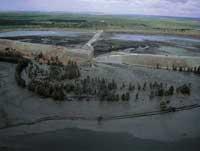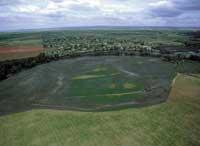Measures against the disaster
Many, and from many different differences and viewpoints, have spoken of the catastrophe of Doñana. Remove importance to what happened, give importance, criticize, applaud the measures taken, go see the damage, skate so you don't have to make any statement… everything.

We cannot account for all this in these pages, but if we can give some brushstrokes about reports published by a group of experts at least.
Keep in mind that the reports have been prepared by the Commission constituted by the Superior Council of Scientific Research, so they will always be close to the official message. However, in the decision to clean toxic water, the advice of this Council to use lime has not been addressed, but it was decided to replace it with toxic carbonate. The commission consisted of 18 experts (chemists, biologists, agricultural experts, directors of natural parks…). The situation was due to the rupture of the Aznalcóllar dam, which studied how to act in the situation. The main conclusions obtained by the Commission of the Superior Council for Scientific Research are:
The measures taken to address the emergency situation have been adequate to avoid a greater environmental problem (29 April).
The measures taken by the Ministry of Environment and the Ministry of Environment, in addition to marking the geographical limit of the problem, have facilitated the elimination of waste generated in the area (5 May).
The increase in water pH would allow the precipitation of metals and the immobilization of sediment. This should be done up to the top of the river. Once the amount of water, with a lower concentration of metals, the mud could be removed with mechanical tools (29 April).

Having not made any chemical treatment to the water of prey, the increase in the acidity of water has been highlighted. This increase in acidity has been associated with the leaching of the mud that carries water from above. Once the sludge is moved, the leaching is expected to be cancelled, so the acidity of the captured water should be stabilized. Once again, it is recommended to treat the water chemically, emptying 2.5 cubic hectommeters of water stored before the rainy season in order to remove the existing mud at the top. The treatment of this amount of water would mean the emission of 2,000 tons of warm oxico, fragmented, limiting water in different parts at the foot of prey. The water extracted by decanting should be carried to a limestone channel that would act as a filter (May 5).
Despite the increase in water pH, the concentration of metals has not decreased, so without previous treatment it would not have to be thrown into the Gualdalquivir River, as it would be very dangerous. As discussed above, if you choose to pour water, a prior chemical treatment would be necessary, using the usual methods of metal decanting (22 May).
Once these emergency measures have been adopted, the installation of a wastewater treatment plant should be carried out (May 5).
The sludge and water found in the dam itself should be treated by chemical procedures, without any extraction (29 April).
Because this water contains heavy metals and high acidity, its discharge to the Guadalquivir River would have a major impact on the ecosystem (May 5).
The removal of the sludge must be carried out taking into account, first of all, the high toxicity of the sludge, so strict safety measures must be taken.
In the second place, it should be taken into account that it will not be possible to remove everything contaminated before autumn, so it should be prioritized the cleaning of potentially harmful areas for man and water (5 May).

Much of the pyrite mud is formed by very small particles, which can be ingested through the coil, so they are very dangerous. Consequently, it is necessary that the personnel who are performing the extraction comply with all necessary security measures.
All mud leaching tests show that they are highly mobile metals, which confirms the need to remove the sludge as soon as possible (12 May).
It is necessary to follow up on the polluting elements of both the ecosystem and water and food for consumption (29 April).
It will not be possible to remove everything contaminated, so it is necessary to follow up (May 5).
In the short and medium term, to do what needs to be done, we should always use soft technologies that respect the environment (29 April).
The old mine of Aznalcóllar can be a good place to give a provisional location to the resulting mud (May 5).





